- Home
- Alistair Moffat
The Faded Map: The Lost Kingdoms of Scotland Page 12
The Faded Map: The Lost Kingdoms of Scotland Read online
Page 12
By the late fourth century, Pictish raiding parties had been seen in the Thames and Gildas spoke of them as ‘transmarini’. Defences had been built along the North Sea coast by the Roman provincial administration – what was known as the Saxon Shore. Forts guarding landing areas in East Anglia, Kent and Sussex hoped to contain incursion from across the North Sea while a line of watchtowers down the North Yorkshire coastline waited for the threat of Pictish attack.
When government in Britain reverted to native control after 409–410, all of the sources give the impression of continuity. Cities had almost certainly been self-governing for some time and a council and a figure in overall authority are mentioned. Perhaps Bede’s and Gildas’ use of ‘superbus tyrannus’ or ‘proud usurper’ speaks of imperial pretention. Like Magnus Maximus, there had been several ambitious men who had made their bid for the throne from Britain. In any case, ‘Vortigern’ is not itself a name but a title. In its various versions, it means something like ‘High Lord’ or perhaps ‘Overlord’.
Whatever his precise status, the Vortigern appears to have taken decisive action. Archaeologists have excavated a series of early Germanic cemeteries near the estuaries of the Humber, the Wash and the Thames. The earliest burials date to well before the 440s and the Saxon rebellions described by Gildas and Bede and they suggest that bands of Germanic mercenaries were placed at these strategic locations to defend against Pictish – or incoming Saxon – attack. In Latin, such groups were known as foederati or ‘federates’ and they were used all over the empire to guard its frontiers. More early cemeteries have been found around south London and near Oxford, again suggesting a defensive deployment of foederati by the Vortigern and his council.
The overall strategy appears to have worked for there are no more reports of Pictish raids in the south after 410. Another, more radical redeployment also had beneficial effects. The kingdoms of southern Scotland seem to have been sufficiently well organised to force Pictish raiders to sail around their territory. They were also able to produce two talented military leaders and enough well-trained soldiers to achieve something unique in the disintegrating western Roman Empire.
Some time around 430, probably on the orders of the Vortigern, an expeditionary force set out from the kingdom of Manau-Gododdin. In Old Welsh, Votadini had transmuted into ‘Gododdin’. Probably a large cavalry troop, it was led down the Roman roads to the old legionary fortress at Chester. Almost 20 per cent larger than any other fort in Britain and with an amphitheatre with seating for more than 8,000, Roman Deva or Chester was a substantial base. At the head of the riders from Manau-Gododdin rode a remarkable figure, another man with a Celtic military title. This was the Cunedda, the Good Leader. It has come down to us as the popular Christian name of Kenneth and the Welsh genealogies name him tautologically as Cunedda Wledig, the General. In the fifth-century lists, the Cunedda is also described as the grandson of Paternus Pesrut and the son of Aeternus. It is a signal of a culture in transition when a Celtic epithet was preferred to a Roman name.
The Cunedda’s mission was to remove the Irish settlers who had taken over the Lleyn Peninsula of North Wales. It seems likely that their war bands had been raiding as far west as Viroconium, modern Wroxeter, and the civitas of the Cornovii. The Irish raiders had originated in Leinster and Lleyn is a cognate name. The peninsula was left undefended when Magnus Maximus took the garrison at the Roman fort at Segontium, Caernarfon, with him to Gaul in his bid for the empire. No details of the Cunedda’s campaign have survived, only notice of its success. Deserted farms and shielings in that part of North Wales were long known as cytian yr Gwyddelod, ‘the huts of the Irish’. Tradition holds that the Vortigern was from the civitas of the Cornovii and his wish to see the Irish expelled might have had personal as well as political motives behind it.
The cavalry warriors from the northern kindreds did not ride home after their victories. Under the Cunedda’s leadership, they established themselves in Wales. The old kingdom of Gwynedd is named after the Cunedda and, according to modern Welsh scholars, it retained an atmosphere of Romanitas for the following two centuries. Early Welsh literary sources seem almost obsessed with a need to explain the origin of place-names but the traditions that the Cunedda’s sons, Meirion and Ceredig, founded the kingdoms of Meirionydd and Ceredigion are unlikely.
What is remarkable about the expedition to Wales from Manau-Gododdin was that it was the only occasion when invading barbarians were permanently expelled from inside the frontiers of the old empire. And, just as importantly, it showed the central authority of the Vortigern as far-reaching, extending to the northern and western edges of Britannia. Given that and the successful use of well-placed Saxon colonies of mercenaries against the Picts, it seems that the first thirty years of post-Roman Britain were a time of increased security and administrative continuity, and the old province was a safer place to live than it had been in the previous forty years.
Economically, however, there was decline. As part of the Roman imperial trade network, Britannia had exported both agricultural and manufactured products and imported a wide variety of goods on some scale. But, after 410, the use of coinage began to fade when the remnants of the army and the administration ceased to be paid. If new coins were minted anywhere in Britain after 410, none have survived. The industrial manufacture of pottery declined sharply and quickly disappeared. This was not simply a matter of a lack of good tableware – pottery of every sort was used in the transport of food and drink. And, if agricultural surpluses could not easily be moved, they could no longer be traded over any distance. This, in turn, removed the motivation for farmers to produce surpluses and pushed communities towards subsistence. Roads on which goods might be carted were left unrepaired in many places and, by the close of the fifth century, towns were certainly in decline in the south. Once again, this inhibited trade tremendously as concentrations of population thinned and dispersed and markets ceased to be held.
* * *
Dark Ages Recession
For about 300 years, in the period immediately following the fall of Britannia around 410, the economy in Britain operated without coin. Currency production ceased and barter took its place. Core manufacturing also ceased abruptly with wheel-turned pottery absent from the archaeological record until the seventh century after having been abundantly available in the Roman period. Urban life shrank dramatically. The British economy took almost 600 years to return to the levels of production and activity in Britannia – a very long recession. In 2010, the Financial Times ran an article on the post-Roman economic collapse because ‘it put recent crises in the shade’. Possibly.
* * *
Both Gildas and Bede ignore the containment efforts of Vortigern (who need not have been the same man between 410 and the early 440s) and they focus exclusively on his great epoch-changing blunder. Having brought the Saxons and, no doubt, other Germanic kindreds to Britain and having failed to meet their demands, he had invited the wolf into the fold. From their strategically placed strongholds, the rebel mercenaries rose up and were quickly able to establish themselves in the south and east. This view takes no account of the undoubted fact that there were already many Germanic groups in Britain. At all events, in the 440s, battles were fought and lost in Kent, the Vortigern was killed at the beginning of the war and, from their bases, it seems that the Saxons raided towns and villas in the west and probably along the Thames Valley. Gildas takes up the tale:
[S]ome of the wretched survivors were caught in the hills and slaughtered in heaps; others surrendered themselves to perpetual slavery in enemy hands . . . others emigrated overseas . . . others entrusted their lives . . . to the rugged hills, the thick forests and the cliffs of the sea, staying in their homeland afraid, until, after some time, the savage plunderers went home again.
Roman authority still held across the Channel in Gaul. In 433, Aetius, a nobleman originally from Moesia, modern Bulgaria, was appointed Consul and General-in-Chief on behalf of the young Emperor Valentin
ian III. Effectively emperor in all but name, Aetius maintained the rule of Rome in the west for thirty years. His greatest achievement was the defeat of Attila and his ferocious Hunnic army in Gaul in 451. When the Saxons rose up against the Vortigern in the 440s and killed him, Gildas wrote that a letter was sent across the Channel:
‘To Aetius, thrice Consul, come the groans of the Britons . . . the barbarians drive us into the sea, and the sea drives us back to the barbarians. Between these, two deadly alternatives confront us, drowning or slaughter.’ The Romans however, could not assist them.
Plague had visited Britain in the 440s and there is also some evidence of catastrophic climate change with the rise of sea levels and widespread flooding. As people fled westwards from the Saxon raids, many decided to go further. Emigrations across the Channel to Gaul began and so many went to the district of Armorica that it became known as Brittany, Little Britain. Gildas takes up the story:
After a time, when the cruel raiders returned to their home, God strengthened the survivors . . . Their leader was a gentleman, Ambrosius Aurelianus, who perhaps alone of the Romans had survived the impact of such a tempest; truly his parents, who had worn the purple, were overcome in it. In our times his stock have degenerated greatly from their excellent grandfather. With him our people regained their strength, challenged the victors to battle and with the Lord acceding the victory fell to us. From then on now our citizens, and then the enemies conquered . . .
Ambrosius Aurelianus is one of the few names noted by Gildas and it sheds a flicker of light on the society of post-Roman Britain. With the formal nomen and cognomen (the praenomen was often written as an initial or even dropped), it signifies a family known as Ambrosius with the Aurelianus element saying something about their origins. The name may have been famous and powerful for it has survived in Welsh as Emrys, and in the earliest sources Ambrosius is hailed as Emrys Wledig, the General. Sometimes the cognomen refers to an emperor or a dynasty under which the family came to prominence and between 270 and 275 Aurelian ruled. Although his reign was short, it was very effective, pulling the empire together, building new walls around Rome, defeating rivals in the east (including the exotic Queen Zenobia of Palmyra) and restoring the discipline of the army. Aurelian’s name conferred prestige and it may be that Ambrosius’ family adopted it towards the end of the third century.
Gildas is untypically clear in this passage, stating that not only were the Ambrosians a noble family, Romano-British rather than native (in implied contrast with the Vortigern) but also that they ‘had worn the purple’. This may mean a connection to Magnus Maximus or Constantine III, both usurper-emperors with British origins, or, more likely, that Gildas intended to convey that Ambrosius Aurelianus was one of the old senatorial class or perhaps even someone with the inherited rank of military tribune. Formally both were entitled to wear the toga praetexta, a toga with a broad purple border.
‘[W]ith the Lord acceding’, Ambrosius defeated the Saxons, wrote Gildas, and this is unequivocal evidence that the general was a Christian. Moreover, it suggests that he came from the more urbanised south. In the fourth and fifth centuries, Christianity in Britain tended to flourish in the towns (the term pagan is from the Latin paganus, ‘a country person’, and is also the origin of ‘peasant’) and there is a persuasive argument for locating Ambrosius around Amesbury in Wiltshire. The place-name seems to be derived from the family name and it may have been close to the power base from which attacks were launched against the Saxons in the east.
Gildas concludes with a passing observation that, after the success of Ambrosius’ campaigns, hostilities with the Saxons ebbed and flowed with neither side gaining a decisive advantage. ‘[O]ur citizens’ won battles and sometimes ‘the enemies conquered’. With the beginnings of a sense of there being a common front in the war for England, a new word came into currency. Combrogi meant ‘fellow countrymen’ or, more precisely, ‘those who share a common border’. The Saxons began to recognise the term and talked of the cumber, ‘the native British’. It survives in many place-names spread all over the map, from Camberwell in south London to Cumberbatch in Cheshire. The most obvious relic is Cumbria and its predecessor, Cumberland.
* * *
Brittany and Amesbury
Place names often record no more than description or location – Newtown, Ford, Rockcliffe, Castletown and so on – but sometimes they remember people. Roman emperors were fond of naming cities after themselves, perhaps the most famous example being Constantinople, and it may be that more obscure figures in Dark Ages Britain are commemorated in this way. In his magisterial The Age of Arthur, John Morris traced a pattern of place-names in the south-east of England which may relate to the native general of the fifth century, Ambrosius Aurelianus. So-called ‘Ambros’ names only occur there – Amesbury, Amberley and Ambrosden. More certain is a clutch of names across the Channel in Brittany. By the 540s and 550s, a series of migrations from Britain had led to the establishment of Little Britain or Brittany in the former Roman district of Armorica. The Breton language is related to Cornish (although some scholars now believe it preserves remnants of Gaulish as well) and Welsh and a scatter of place-names, such as Bretteville or Briteville, reaches as far east as Normandy.
* * *
Gradually combrogi also mutated into the Welsh word for Wales, Cymru, and Cymry for the Welsh. Its first surviving appearance is in a praise poem to a seventh-century Welsh king, Cadwallon, and it is spelled as Kymry. Although the word slowly became dominant in common speech, the poets clung for centuries to the past when they sang of Brython for Wales and Brythoniaid for the Welsh. But in reality the greater part of Britain was to be conquered by the Saxons and England would become Lloegr, ‘the Lost Lands’.
If, indeed, the wars of Ambrosius Aurelianus concluded with the sort of stalemate suggested by Gildas, then life in the west of Britain will have carried on relatively undisturbed. Archaeologists have found evidence of long-distance trade – Mediterranean pottery dating to the fifth and sixth centuries in North Wales, Ireland and the south-western and western coasts of Scotland. Many of these pots and their precious contents were probably delivered by ships operating out of the Biscay and Brittany ports and, in the Life of St Columba, describing the second half of the sixth century, the community of monks on Iona waited for ‘Gaulish ships arriving from the provinces of the Gauls’. All sorts of goods were traded on what were almost certainly regular visits – wine for communion and colours for illuminated manuscripts from as far away as Syria and even India.
Ideas also travelled in the Gaulish ships and some seem to have found landfall in Galloway. With his community at Marmoutier, near Tours in Gaul, St Martin is often seen as the founder of western monasticism. He was revered and influential in the early church and the survival of a fascinating group of inscribed stones in south-western Scotland strongly suggests the long reach of his teachings. At Kirkmadrine (a metathesis for Kirkmartin), two bishops were remembered on one memorial. Viventius and Mavorius appear to have led a congregation of some substance in the Rhinns of Galloway, the most westerly peninsula. It is thought that the Kirkmadrine stones date to 500 but even earlier is the inscription to a man called Latinus found at Whithorn. It listed three generations of his family, presumably all Christians, and close by the remains of an early cemetery have been found.
The most famous name associated with early Christianity in Galloway belongs to Ninian. First mentioned by Bede, he is said to have converted the southern Picts and was a saintly bishop of the British. His church was built in stone, ‘in the Roman manner, Ad Candidam Casam’, at the White House. In the later seventh century, it became known as Whithorn when the Angles took power in Galloway. Scholars periodically dispute the existence of Ninian but there can be little doubt that Christianity first entered the north through Galloway and moved over the watershed hills to the Borders and the Forth and Clyde Valley. As it declined and shrivelled, the city of Carlisle and its church appear to have had less and less inf
luence.
In his monastic life, St Martin’s inspiration was a group of Near Eastern ascetics known as the Desert Fathers. To escape persecution in the towns and cities and to find a more solitary, undistracted and contemplative life, they sought out remote, even harsh, places in the deserts of the interior. Lacking seas of inhospitable sand to surround and isolate a community of monks in Western Europe, St Martin substituted the wildwood of central Gaul. Deep in the forests at Marmoutier he and his brothers could shut out the temporal world and seek communion with God. When Martin’s ideas travelled north, the wastes of the sea replaced the tangle of the woods but the name the Gaels gave to these remote, windswept places remembered their eastern origins. These remote communities were called diseartan, ‘deserts’, and the town of Dysart on the coast of Fife is derived from the memory of the ascetics of Syria and Palestine.
* * *
Saints
It was not until the eleventh century that the papacy took control of the making of saints. Before Urban II insisted that only the pope could confer sainthood, it had been a matter for local prelates and local tradition. In the early church, martyrdom automatically made the victim a saint but, after the fourth century, the definition became more elastic. When the quality of ‘heroic virtue’ was observed in monks and priests and occasionally in the laity, that could, in itself, be a qualification. The notion behind this was best illustrated by ascetics – those who willingly suffered all manner of privation for their faith. Their holy suffering was seen as analogous to the torture and often appalling deaths of real martyrs and, after a suitable period of what was known as ‘bloodless martyrdom’, they could become saints. In the Middle Ages, the Congregation for the Causes of Saints was formalised and a centralised bureaucracy was set up in Rome. Cases were tried as in a court of law with the Postulator arguing the case for conferring sainthood and the Devil’s Advocate taking up the case against.

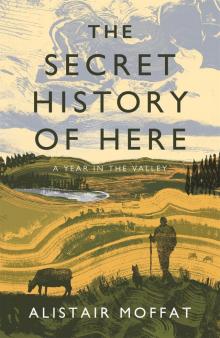 The Secret History of Here
The Secret History of Here The Night Before Morning
The Night Before Morning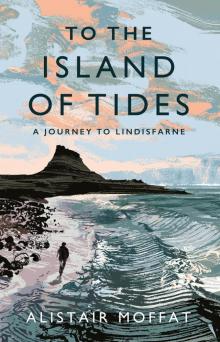 To the Island of Tides
To the Island of Tides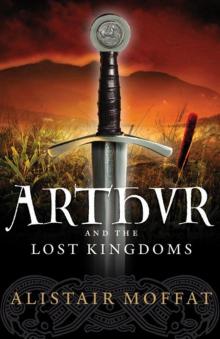 Arthur and the Lost Kingdoms
Arthur and the Lost Kingdoms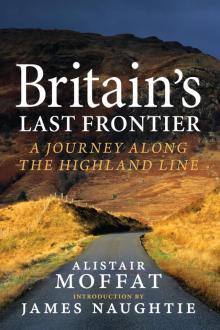 Britain’s Last Frontier
Britain’s Last Frontier The Faded Map: The Lost Kingdoms of Scotland
The Faded Map: The Lost Kingdoms of Scotland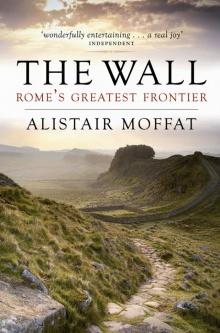 The Wall
The Wall